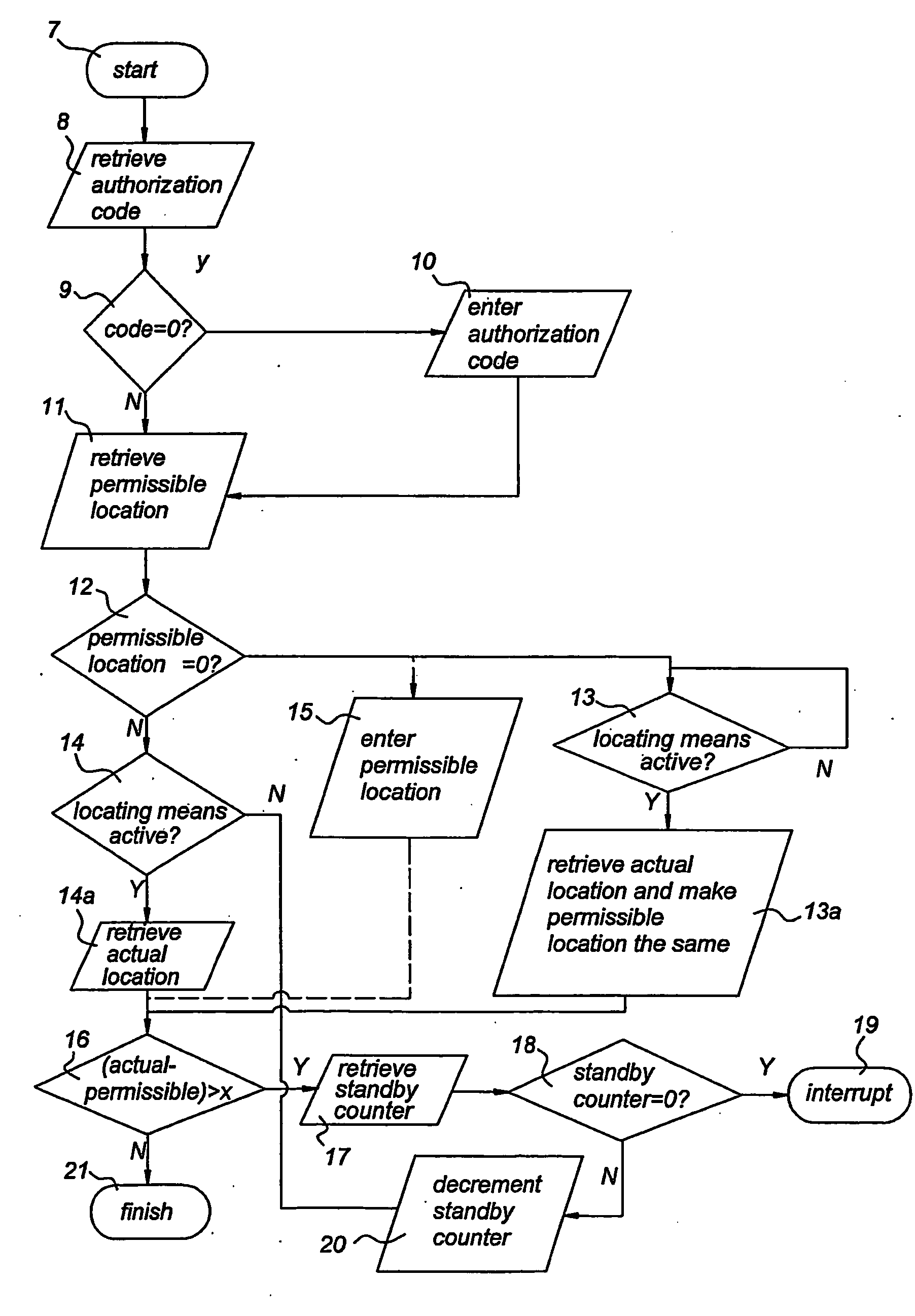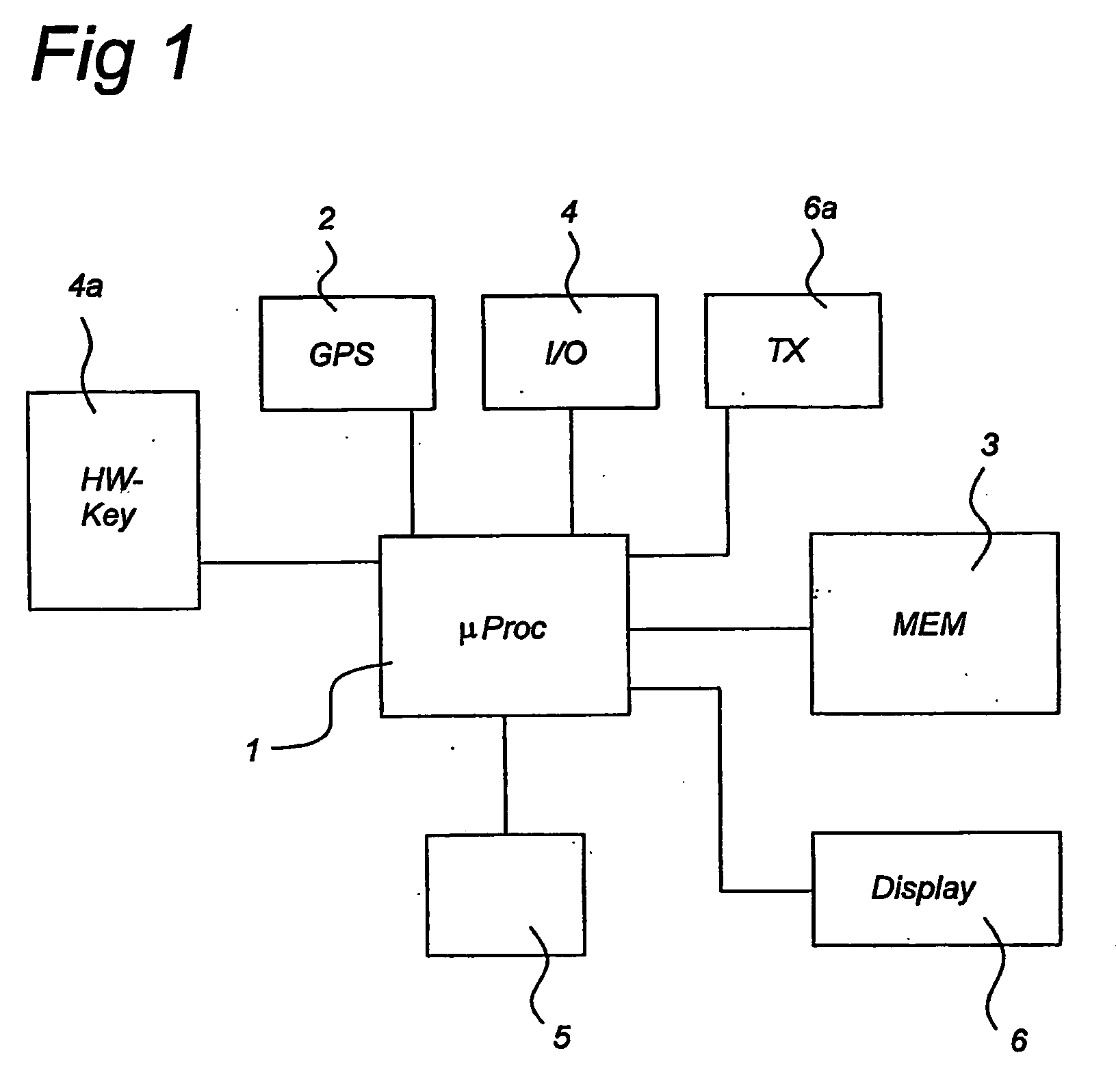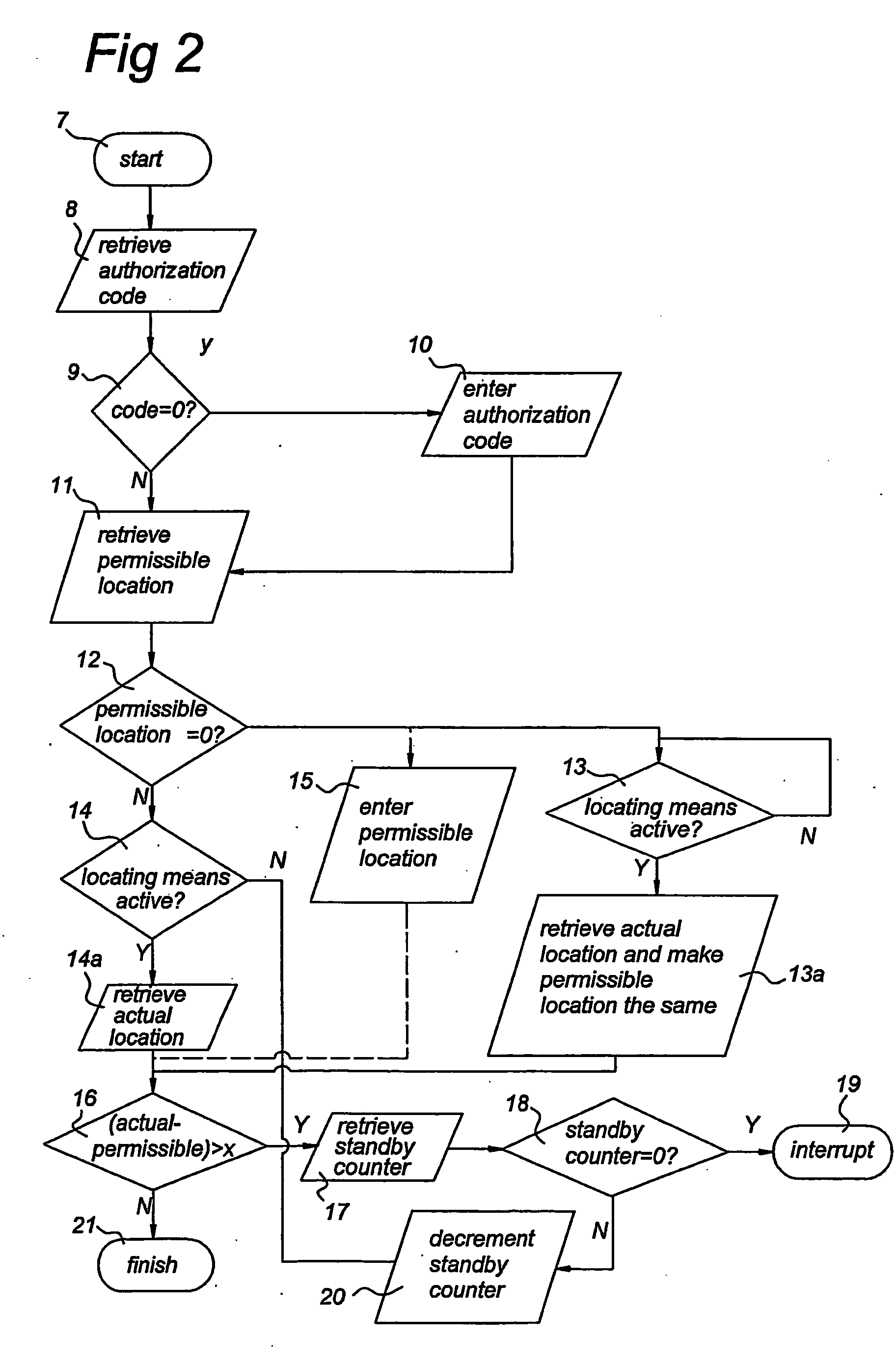Anti-Theft Location Check Device
- Summary
- Abstract
- Description
- Claims
- Application Information
AI Technical Summary
Benefits of technology
Problems solved by technology
Method used
Image
Examples
Embodiment Construction
[0023]FIG. 1 schematically depicts a diagram of the theft control device or anti-theft device according to an embodiment of the present invention. Processing means 1, connected to locating means 2 and storage means 3, retrieve an actual location from the locating means 2 and a permissible location from the storage means 3.
[0024]The processing means 1 provide an interrupt signal to an electronics apparatus 5, e.g. PC or DVD-player or the like, in order to disable at least a part of a functionality of the electronics apparatus 5, if the retrieved actual location does not match the retrieved permissible location. For example, in case of a DVD-player, only the receiver of the remote control that is mounted in the DVD-player could be disabled, limiting the functionality of the DVD-player to the functionality associated with the control buttons on the front plate of the DVD-player. In an alternative embodiment, e.g. the disc tray of the DVD-player is disabled if the actual location differ...
PUM
 Login to View More
Login to View More Abstract
Description
Claims
Application Information
 Login to View More
Login to View More - R&D
- Intellectual Property
- Life Sciences
- Materials
- Tech Scout
- Unparalleled Data Quality
- Higher Quality Content
- 60% Fewer Hallucinations
Browse by: Latest US Patents, China's latest patents, Technical Efficacy Thesaurus, Application Domain, Technology Topic, Popular Technical Reports.
© 2025 PatSnap. All rights reserved.Legal|Privacy policy|Modern Slavery Act Transparency Statement|Sitemap|About US| Contact US: help@patsnap.com



